Roman graffiti is much more than just random drawings or words on old walls. These inscriptions are powerful expressions of political satire and active involvement in local politics. One of the most impressive collections of such writings can be found in Pompeii, where volcanic ash has preserved thousands of messages that once filled the city’s streets.
Pompeii graffiti offers a glimpse into a lively political culture, showing how everyday citizens and candidates directly communicated their opinions and campaigns to the public. These writings served as grassroots tools for convincing others, criticizing authority, and commenting on society.
The book Roman Graffiti Decoded: Political Satire on Ancient Walls explores the deeper meanings behind these inscriptions, providing unique insights into daily urban life and the political atmosphere of ancient Rome. It allows us to hear voices that are often overlooked in formal historical accounts—those of ordinary people actively participating in their city’s democratic processes.
However, this vibrant political culture didn’t exist in isolation. It was influenced by larger trends such as political instability and weak leadership, which acted as a shaky foundation for Rome. The decline of the Western Roman Empire serves as a stark reminder of how these factors can weaken even the strongest civilizations.
Additionally, the power and strategy of the Roman military played a significant role in shaping the political landscape. The Roman military was not just a group of soldiers; it was a highly organized system that combined discipline, strategic thinking, and innovative tactics.
Art also reflected this dynamic society, with the evolution of Roman sculpture showcasing a distinct emphasis on realistic portrayals and displays of power. These sculptures served not only as artistic expressions but also as tools for political propaganda and religious devotion.
Finally, understanding the Roman pantheon reveals the gods associated with power, justice, and wisdom who influenced societal values and beliefs during this time period.
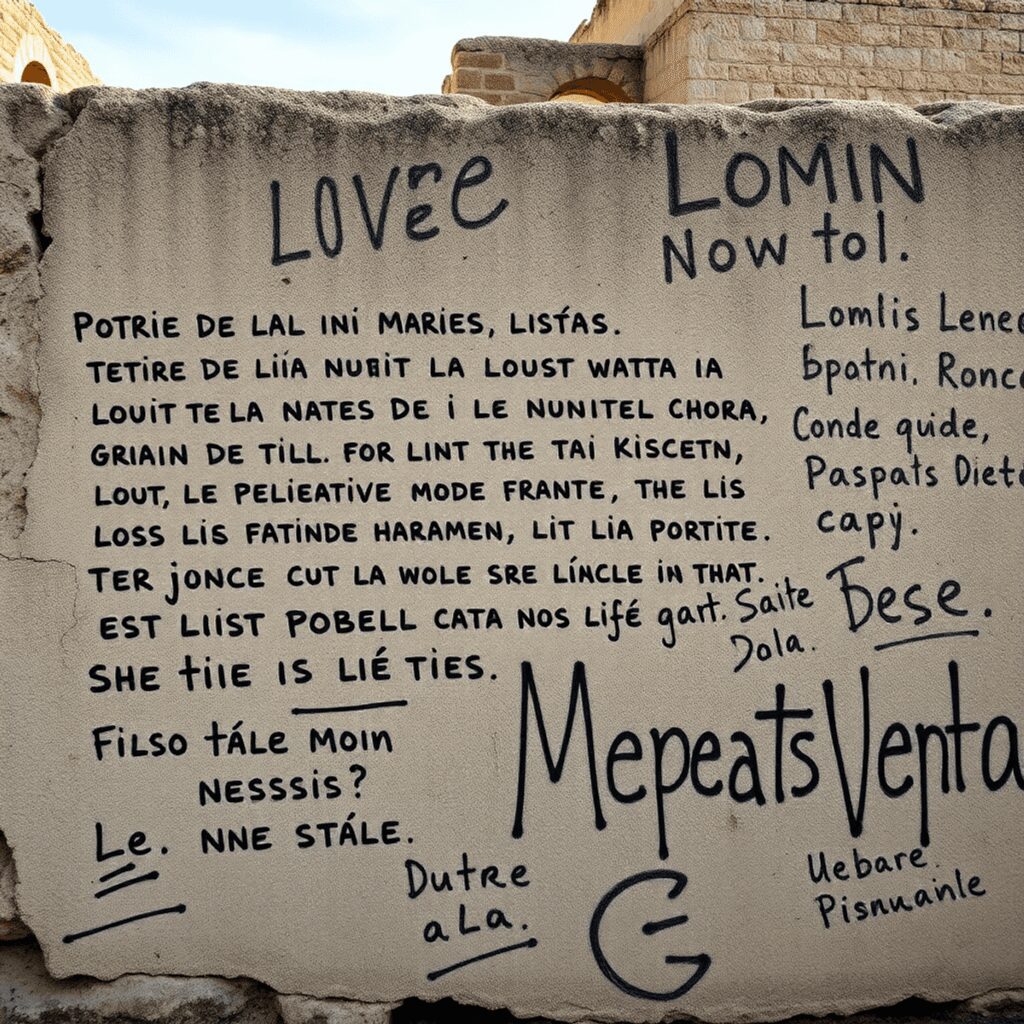
The Historical Context of Roman Graffiti
Pompeii, an ancient Roman city frozen in time by the catastrophic eruption of Mount Vesuvius in 79 AD, provides an unparalleled snapshot of urban life in ancient Rome. The volcanic ash that buried the city preserved not only buildings and artifacts but also the walls covered with graffiti, giving us direct access to the voices of its inhabitants.
Graffiti was widespread throughout Roman cities, not limited to Pompeii. These inscriptions appeared on public spaces, homes, taverns, and marketplaces. They were a common form of communication used by ordinary people rather than just elites or literate officials. Unlike formal texts carved in stone or written on expensive papyrus, graffiti captured spontaneous expressions and everyday concerns.
The content of these writings reflects a broad spectrum of everyday social dynamics:
- Political endorsements and criticisms
- Personal messages and love declarations
- Announcements about births or deaths
- Warnings against thieves or dishonest individuals
Political content often mixed with satire and social commentary. The walls served as open forums where citizens engaged in debates and expressed opinions about local leaders or issues affecting their community. This range of messages reveals how graffiti functioned as a living record of public discourse within ancient Roman urban life.
In addition to these everyday concerns, the graffiti also occasionally touched upon Roman religious practices, which were deeply connected to the divine through rituals and sacrifices. The Romans believed in many gods, influenced by earlier cultures like the Greeks and Etruscans. This belief system emphasized the importance of maintaining good relationships with these deities.
Moreover, the political messages found in graffiti often reflected the broader enduring legacy of Roman law, which has had a significant impact on today’s legal systems worldwide. This influence is just one aspect of how Roman society has shaped modern civilization, laying the groundwork for many aspects of contemporary life.
Finally, the art surrounding these inscriptions—often intricate and detailed—speaks volumes about the masterpieces of Roman art that have left a timeless legacy. Emerging from the confluence of various cultures, Roman art is a testament to the empire’s vast reach and its ability to assimilate and innovate.
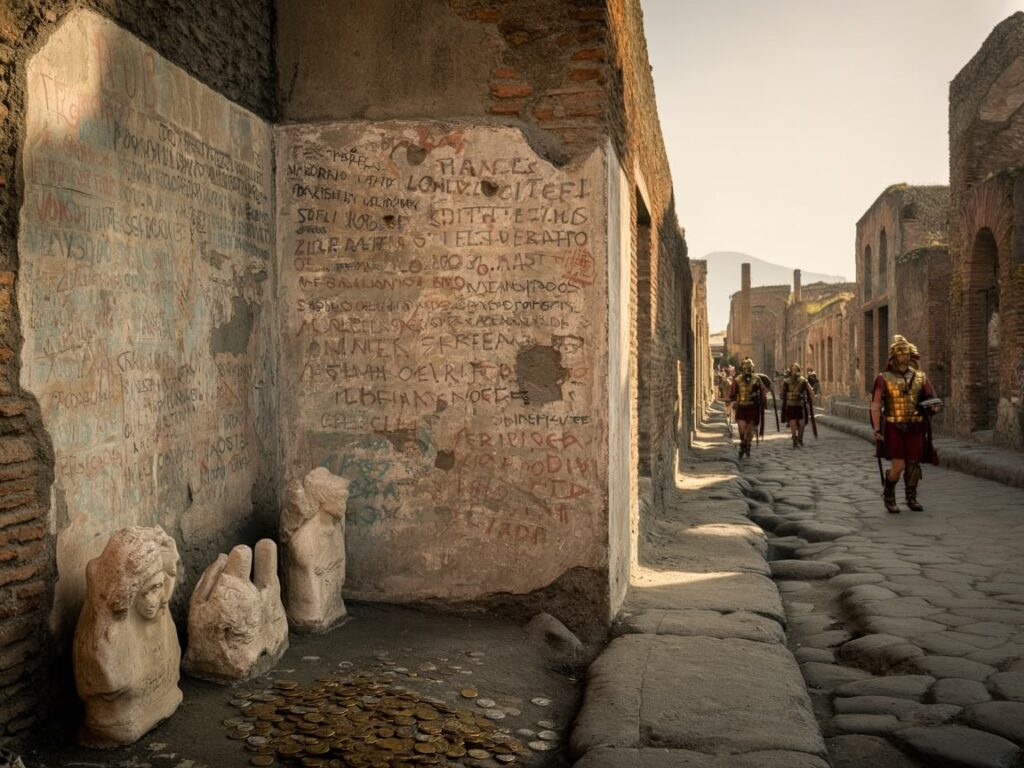
Political Graffiti as Tools of Local Campaigns
Pompeii reveals an astonishing cache of over 1,500 political campaign graffiti, illustrating how integral these inscriptions were to local politics. Candidates and their supporters often hired professional scribes skilled in crafting persuasive messages. These writers knew how to appeal directly to voters with concise, memorable slogans etched onto public walls.
Common themes in these election slogans included:
- Promises to protect the public treasury, emphasizing fiscal responsibility and integrity.
- Endorsements from various trade groups such as bakers, fullers, and merchants, showcasing broad community support.
- Vows to uphold traditional Roman virtues or improve city infrastructure.
The political graffiti reveal a distinctly grassroots nature of Roman elections. Campaign tactics were less about grand speeches or support from the elite and more focused on direct communication with ordinary citizens. Walls became open-air bulletin boards where candidates competed for attention in a crowded political marketplace.
These inscriptions demonstrate that local politics in Pompeii was vibrant and competitive, relying heavily on visual impact and repetition. Political messages carved into stone or plaster made campaigns accessible to all social classes, ensuring every passerby could engage with the promises and criticisms shaping their community’s future.
In addition to these graffiti, coins also served as powerful tools of propaganda, conveying authority and legitimacy while delivering political messages.
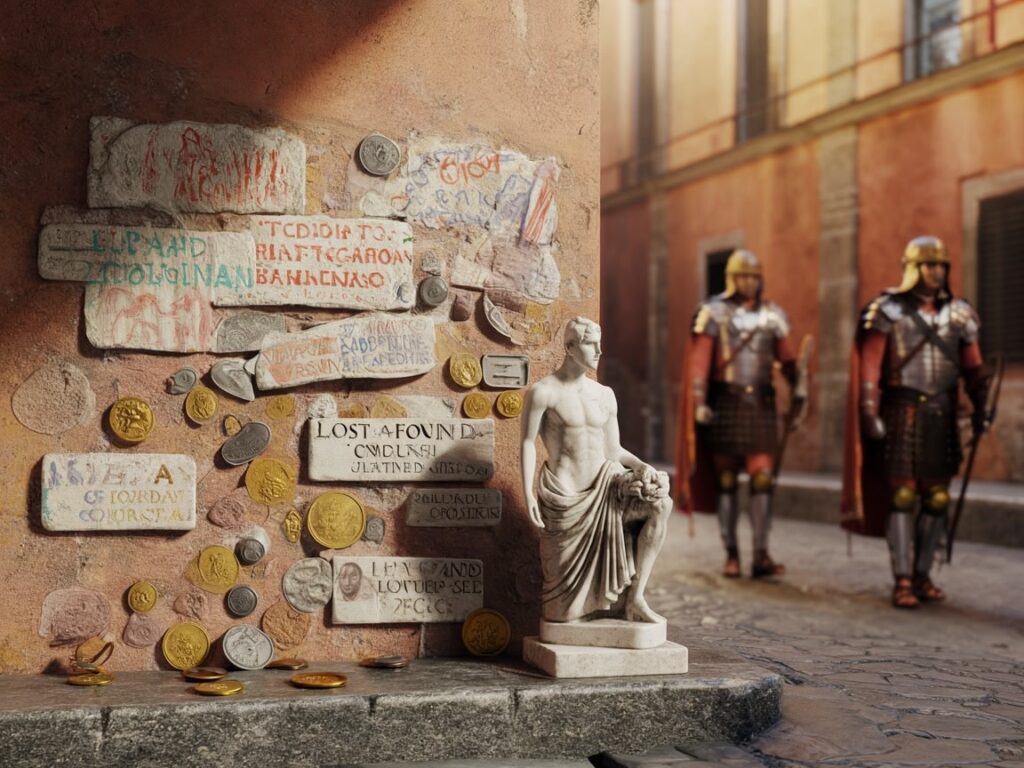
Satirical Techniques in Roman Political Graffiti
Roman graffiti used political satire and slander as powerful tools to sway voters. Candidates and their supporters didn’t hesitate to use humor and ridicule to undermine opponents, exposing a form of dirty politics that resonates even in modern campaigns. These inscriptions often portrayed rivals as thieves, drunkards, or morally corrupt individuals, aiming to damage their reputation in the eyes of the public.
Examples of such tactics include:
- Graffiti accusing a candidate of stealing public funds
- Claims that an opponent was frequently intoxicated
- Linking rivals to criminal behavior or laziness
This approach mirrored today’s political mudslinging, where character assassination remains a strategic weapon.
The use of satire was not merely offensive; it engaged voters by making political debates accessible and memorable. Humor softened harsh criticisms while reinforcing negative perceptions. Ridicule worked as social commentary that shaped public opinion, encouraging citizens to align with candidates who appeared more trustworthy or competent.
In Roman graffiti, wit and mockery functioned as grassroots means to influence elections directly on the urban walls where daily life unfolded — a vivid example of how ancient voices spoke truth to power through sharp satire.
Social Groups and Community Endorsements in Graffiti
Roman graffiti from Pompeii reveals vivid endorsements from various social groups that played a crucial role in local politics. You find inscriptions supporting candidates signed by tradespeople such as:
- Innkeepers, who were central figures in urban social life, offering both hospitality and informal meeting places.
- Chicken vendors, representing small-scale merchants integral to daily commerce.
- Mule drivers, essential for transportation and logistics within the city.
These endorsements served as public declarations of loyalty and influence, reflecting how different occupational groups mobilized their networks to back preferred candidates.
Religious cult members also actively participated in political endorsements. Graffiti sometimes bore the marks of specific cults, signaling that candidates had secured backing from influential religious communities. This connection between politics and religion highlights the interwoven nature of social identity and power structures in Pompeii.
The presence of these varied endorsements on walls illustrates complex social alliances and community networks. Political campaigns extended beyond individual ambitions, relying heavily on collective support from distinct sectors of society. Recognizing how these groups publicly aligned themselves provides insight into the grassroots organization and social fabric that shaped elections in ancient Roman cities.
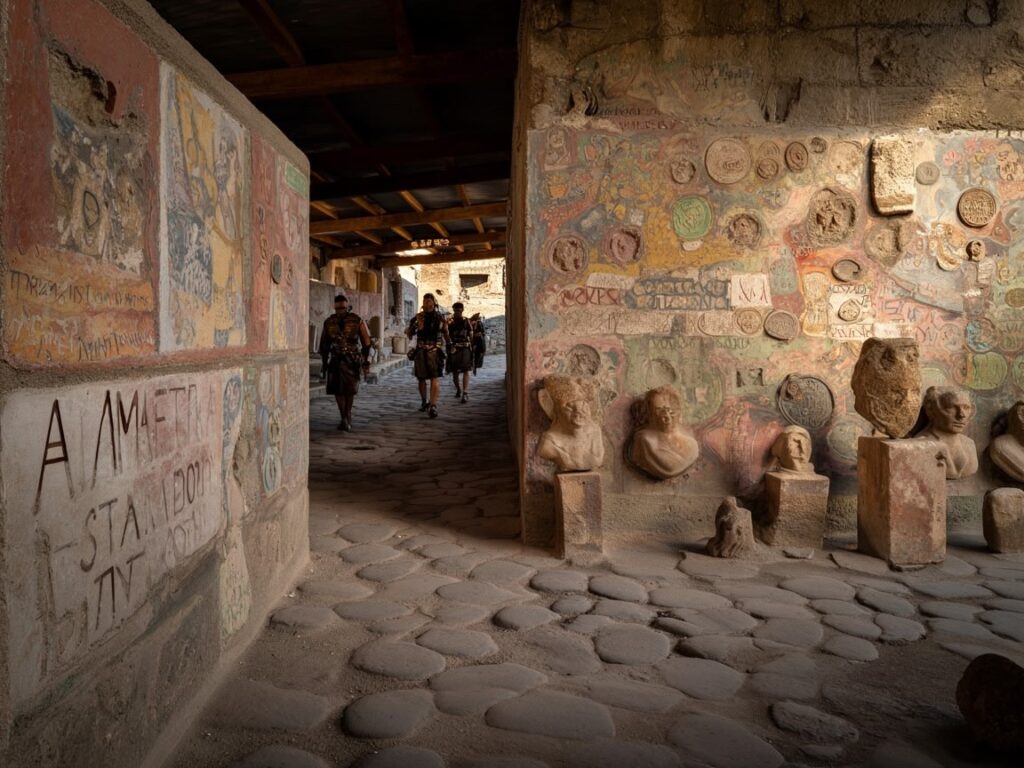
Beyond Politics: The Multifaceted Nature of Roman Graffiti
Roman graffiti in Pompeii reveals more than just political messages. The walls served as a canvas for a wide range of personal messages that provide glimpses into everyday life and human emotions.
Examples of Personal Messages Found in Roman Graffiti
Examples of these include:
- Lost-and-found notices: Citizens posted appeals for returning lost items, showing a community engaged in practical problem-solving.
- Personal announcements: Births, marriages, and other life events were sometimes commemorated on walls, marking important milestones publicly.
- Warnings and advice: Notices cautioning against burglars or idle individuals reflect concerns about safety and social order.
- Love declarations: Many inscriptions express affection, desire, or jealousy. These candid emotional confessions often appear alongside humorous or biting insults aimed at rivals or former lovers.
- Philosophical musings: Some graffiti convey reflections on fate, life’s brevity, or moral lessons. For instance, writing a philosophical poem on life could capture the essence of such thoughts, offering a rare voice of everyday Romans engaging with deeper reflections.
These varied writings demonstrate that the graffiti tradition was not limited to political propaganda. The urban walls were a vibrant forum for personal expression, social interaction, and cultural commentary.
Such diversity enriches our understanding of Pompeii’s residents beyond their public roles. It shows their humanity—full of love, humor, concerns, and contemplation—etched directly onto the city’s very fabric.
The Significance of Graffiti for Understanding Ancient Roman Life
Roman graffiti is an important historical source, giving us direct access to the voices of everyday people rather than just the elite. Unlike formal texts, these inscriptions provide unfiltered insights into public communication and grassroots politics, reflecting the concerns, humor, and disputes of ordinary Romans.
Why Roman Graffiti Matters
1. Accessibility
Graffiti was publicly displayed in streets and taverns, making it a medium accessible to a broad demographic.
2. Social Commentary
Beyond political slogans, these writings reveal social tensions, community values, and personal relationships.
3. Historical Value
For historians decoding Roman Graffiti, these messages are invaluable for reconstructing the texture of urban life—its daily routines, social networks, and political engagement.
You witness a vivid picture of how public opinion was shaped from the ground up. This bottom-up perspective is rare in ancient sources dominated by official records or elite literature. Graffiti breaks that mold by offering straightforward commentary on politics and society from the people themselves.
Moreover, understanding the context in which these graffiti were created can be further enriched by exploring other aspects of Roman life such as the trade and economy in Ancient Rome. These economic practices were foundational to its vast empire, influencing both daily life and long-term stability.
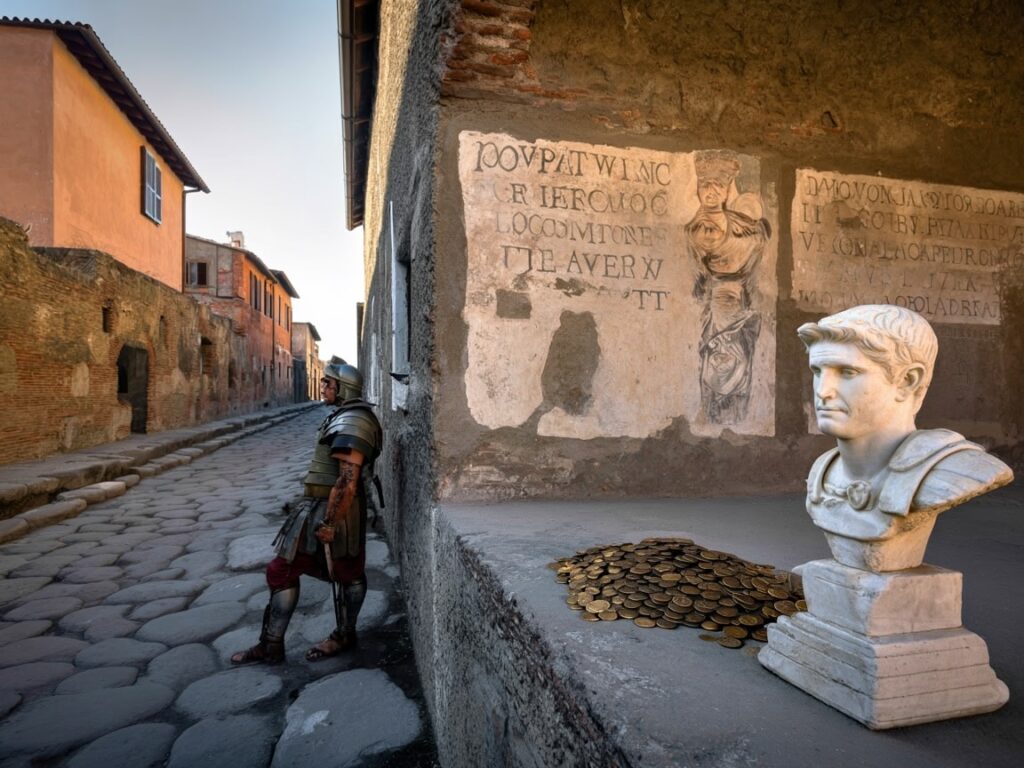
Understanding Political Messages on Ancient Walls Today
Scholars rely heavily on archaeological interpretation and epigraphy to unlock the meanings hidden within Roman graffiti. Epigraphy, the study of ancient inscriptions, provides essential tools for reading faded or fragmented texts, identifying handwriting styles, and understanding linguistic nuances.
Techniques Used by Scholars
To decipher the messages behind Roman graffiti, scholars employ various techniques:
- Careful documentation of graffiti locations to contextualize messages within urban spaces
- Comparative analysis with contemporary literary sources and historical records
- Use of digital imaging and 3D scanning to enhance legibility of weathered inscriptions
- Cross-referencing symbols and abbreviations common in Roman political communication
These methods reveal subtleties such as sarcasm, irony, or coded references that might otherwise be missed. Graffiti thus emerges as a vital component of cultural heritage, offering raw historical insights into public opinion, social alliances, and political campaigning. Decoding these ancient writings enriches our understanding of everyday political engagement far beyond official documents or elite narratives.
Conclusion
The political satire legacy of Pompeii’s walls is more than just a historical curiosity—it gives us direct access to understanding ancient urban life. These graffiti are raw, authentic voices that capture political rivalries, social alliances, and everyday concerns. Their significance goes beyond archaeology; they help us understand grassroots democracy and public discourse in ancient times.
Roman Graffiti Decoded: Political Satire on Ancient Walls invites you to appreciate how these ancient inscriptions connect us to real people who lived, debated, and joked centuries ago—preserving a vivid snapshot of Rome’s vibrant civic culture still speaking loudly today.
FAQs (Frequently Asked Questions)
What is the significance of Roman graffiti in understanding ancient political satire?
Roman graffiti goes beyond casual scribbles, serving as a vibrant medium for political satire and local politics. These inscriptions, especially those preserved in Pompeii, offer unique insights into ancient Roman urban life and political culture, revealing how humor, ridicule, and slander were used to influence public opinion during elections.
How does the preservation of Pompeii contribute to our knowledge of Roman graffiti?
Pompeii’s preservation under Mount Vesuvius ash provides an unparalleled archaeological site where over 1,500 political campaign graffiti have been discovered. This volcanic preservation allows historians to study everyday social dynamics and grassroots political activities reflected in the graffiti, offering a rare glimpse into the lives and sentiments of ordinary Romans.
In what ways were political campaigns conducted through graffiti in ancient Rome?
Political campaigns in ancient Rome often utilized graffiti as a tool for communication. Candidates or their supporters hired professional writers to craft messages that included election slogans, promises to protect public funds, and endorsements from trade groups. This grassroots tactic highlights the active participation of various social groups in local politics through wall inscriptions.
What satirical techniques are evident in Roman political graffiti?
Roman political graffiti employed satire and slander as powerful tools to sway voters. Common techniques included associating opponents with negative traits like theft or drunkenness to discredit them. These tactics mirror modern political mudslinging and demonstrate the role of humor and ridicule in shaping public opinion within ancient communities.
How do social group endorsements appear in Roman graffiti?
Graffiti from Pompeii reveals endorsements from diverse social groups such as innkeepers, chicken vendors, mule drivers, and members of religious cults. These public supports reflect intricate social alliances and community networks, illustrating how different professions and religious affiliations actively participated in endorsing candidates during elections.
Why is Roman graffiti considered a valuable historical source for studying ancient life and politics?
Roman graffiti serves as a primary source that captures practical daily life and grassroots politics accessible to common people rather than elites alone. It encompasses not only political messages but also personal notes like love declarations and lost-and-found notices, offering comprehensive social commentary that enriches our understanding of ancient Roman society.

